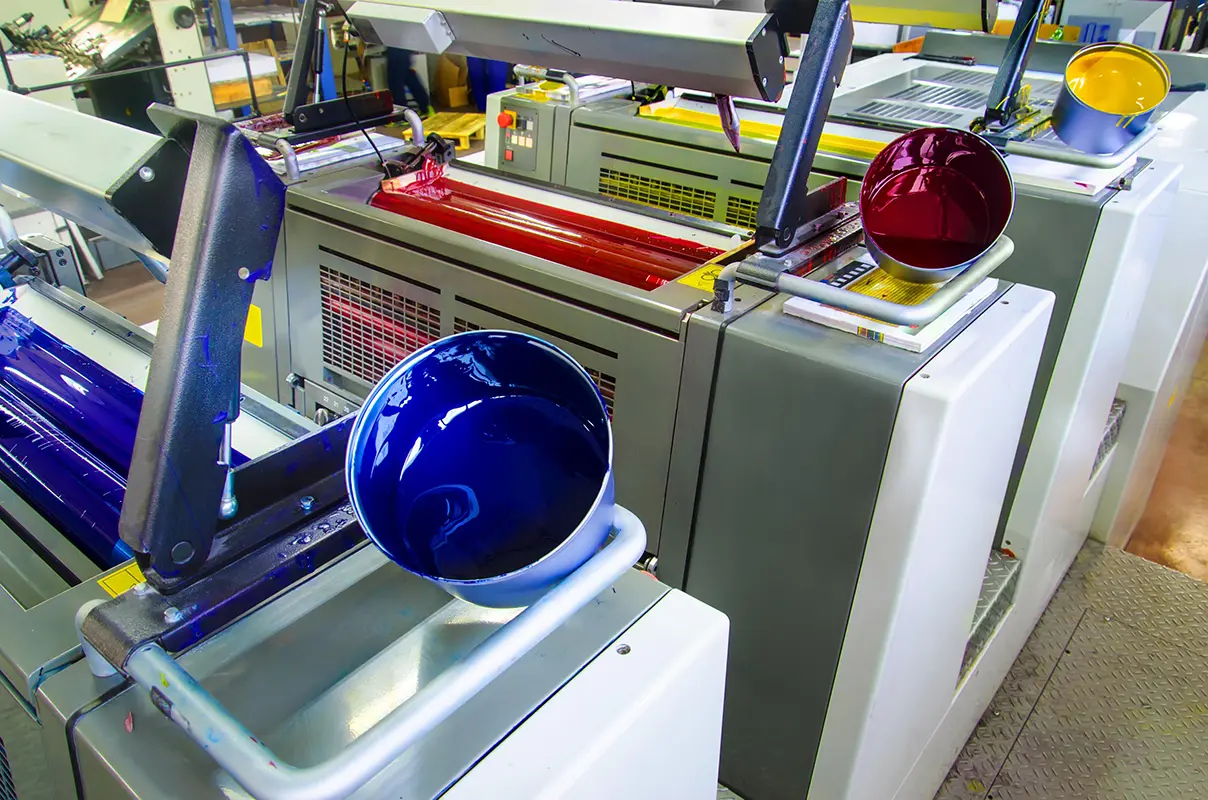CD and DVD printing
Looking for top-quality printing services for CD-R and DVD-R? Look no more! At Digi Pres, we specialize in professional printing services for optical media. Our printing machines utilize 3 techniques: digital, screen printing, and offset printing, ensuring a durable and attractive print that is resistant to factors like UV rays or water. By customizing your discs with your business’s print, you’ll create a professional and distinctive image that increases brand awareness.
Recordable CDs or DVDs with custom prints are great when you need to record and deliver digital material to your client. Our CD printing offer is perfect for photographers, medical clinics, veterinary clinics, and other businesses using blank CDs and DVDs with a company print. We also offer various types of packaging options that can complement the individual character of your printed discs. Check out our CD packaging page to see the available options.
In addition to our printing services, we offer disc duplication for quantities ranging from several dozen to several hundred discs. With our industrial burners, we ensure that every disc is copied accurately and efficiently. Contact us to learn more about our CD and DVD printing and duplication services and how we can help your business succeed.
CD and DVD printing - which on-body print method is the best?
Each of the optical media printing technologies has its advantages and downsides. The selection of the right one depends on many factors, including quantity, colors, and even design details. However, you don’t have to worry about any of the technicalities. Our team will choose the best print technology for your project.

Screen printing on CD and DVD
Screen printing is one of the earliest methods used for printing labels on optical discs. Over the years, this technique has served calligraphers and painters. However, with the progress of technology, it had to be modernized, which gave it a wide range of applications. To create a label on a disc, ink must be squeezed through a silkscreen with a printed template (called a printing form). After the ink is applied to the surface – in our case, CD or DVD – it is cured with a UV lamp.
Screen printing is characterized by high color saturation, and it is also possible to obtain deep black. It works great for projects with a large, monochrome surface so that the color will be even in every place. We recommend it for projects with vector graphics and special color prints (PANTONE), which helps achieve many interesting effects and scratch resistance. This method works perfectly for large print runs.
Offset printing
Offset printing is a type of flat printing. The print is transferred to the disc’s surface from a printing plate using a special rubber blanket. After the ink is applied, it is cured with a UV lamp, making the disc usable immediately after the process is completed. The disc label remains non-abrasive, waterproof, and non-sticky.
Offset printing works best for orders of 500 pieces or more and raster graphics. We recommend it for multi-color images such as photographs. It is also used for detailed graphics with tonal transitions and projects without PANTONE colors. However, if your project contains graphics with large, monochrome surfaces or you need a small run, we suggest choosing either screen or UV printing.


Digital printing (Inkjet)
Digital printing is a direct technique, which means that we do not need a separate printing medium, such as a screen or printing plate. The raster dots that make up the image are directly applied to the disc’s surface from the printing nozzles and hardened with UV light. This method does not require a typical preproduction process, which saves a lot of time and shortens the production process.
Digital printing is used for multi-color CMYK projects and is great for photos, images with large tonal transitions, and small details. Detailed elements and gradients will look flawless.
One of the undeniable benefits is that you can print the desired number of CD/DVD discs directly from the file, with good quality and an optimal cost per unit. Our machine has six printing heads, which significantly improves image quality in areas with tonal transitions. Digital printing is used for small print runs, not exceeding 500 units.